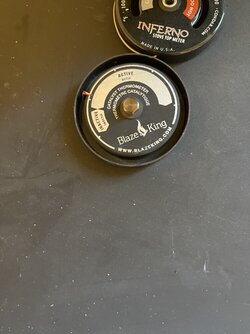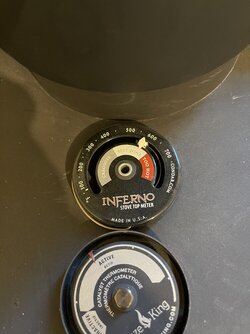stoveliker
Minister of Fire
(Been too busy with work and projects to post here much lately.)
First stove lighting this afternoon. A few 4 year old red oak pieces and some 4 year old cedar cut offs (previous stove ate larger wood). Good to get things going. Overnight will be oak, and then some low and slow tomorrow when it'll be a high of 48 F - but 30 F at night, so I'm going to keep the thing warm. (not hot ).
).
My cat has seen 2000 hrs last year (I know because of the energy usage on the wifi plug that runs the fan that helps me move heat from the basement to the main floor). It definitely has settled down. It just glides into the active zone. I'm not running hard (though a mix of hard and softwood) now, and it's at the bottom quarter of the active zone. Pipe probe is at 300 F.
First stove lighting this afternoon. A few 4 year old red oak pieces and some 4 year old cedar cut offs (previous stove ate larger wood). Good to get things going. Overnight will be oak, and then some low and slow tomorrow when it'll be a high of 48 F - but 30 F at night, so I'm going to keep the thing warm. (not hot
 ).
).My cat has seen 2000 hrs last year (I know because of the energy usage on the wifi plug that runs the fan that helps me move heat from the basement to the main floor). It definitely has settled down. It just glides into the active zone. I'm not running hard (though a mix of hard and softwood) now, and it's at the bottom quarter of the active zone. Pipe probe is at 300 F.




